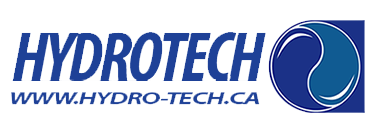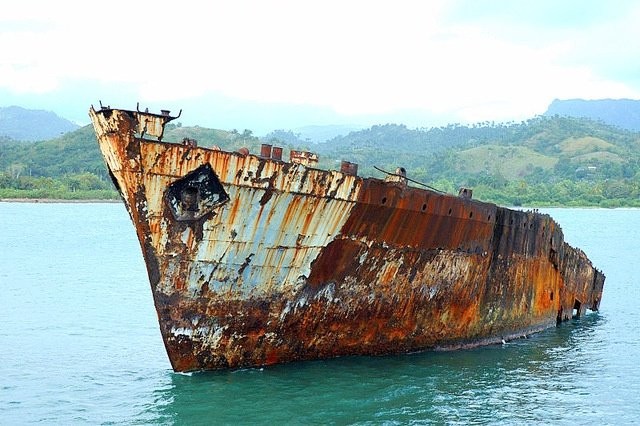The Main Effects of Saltwater on Port Equipment & How to Protect it

Saltwater is far more corrosive to metal than freshwater. In fact, your entire port is constantly under attack by the destructive elements of saltwater. It permeates almost everything and will start deteriorating metals as soon as they make contact. Port equipment needs extra protection from the sea and elements to stop this aggressive corrosiveness.
Any port equipment in the harbor is subjected to this corrosive effect. The main types of corrosion you’ll face are galvanic corrosion and electrolysis. These are the processes that make your port deteriorate and end up causing significant repair costs.
Galvanic corrosion comes from having different metals making contact in saltwater. There are several ways this can occur, and all of them lead to faster deterioration and corrosion. If left unchecked, a full replacement of machinery may be required. Hydro Tech of Vancouver, BC, can help keep your port running smoothly by ensuring the metallic content of any potential sealants won’t cause galvanic corrosion of the underlying steel or aluminum.
Ocean-going vessels need to have anti-corrosive paint and sealant on the hull for protection from the elements. Ports are the same. The paint needs to be the same across the entire hull of the vessel or other structures that contact salt water. The difference in paints can be just enough to cause galvanic corrosion, undermining the purpose of the paint in the first place.
Reinforced concrete pillars around the port need to be inspected routinely to ensure the sealant’s protective coat is intact. One little crack in the concrete can give access to the destructive force of saltwater. Reinforced pillars and pilings contain rebar. The rebar will rust and corrode quickly from the saltwater, leaving the pilings weak and susceptible to collapse. Hydro Tech can help treat your pilings to avoid ongoing corrosion.
Several situations can cause galvanic corrosion, as we have shown. However, did you know that simply mooring two vessels with different hull metals next to each other can start the process of deterioration? For example, when you moor a steel vessel next to an aluminum hull, you’ll get galvanic corrosion. While it takes time for this type of corrosive force to cause real damage, it is something to be aware of and plan for.
The next type is electrolysis. Electrolysis is far more destructive than galvanic corrosion. Improper wiring can cause this by sending stray electrical currents through objects. These currents will cause pitting corrosion in no time at all. Damage can be severe, so make sure to check any cables on welding equipment and ensure any ground cables are connected properly.
Pitting corrosion can be extremely damaging. Electrolysis doesn’t just cause pitting damage. Electrical flows in saltwater can pose a significant hazard to anyone in the vicinity.
Ports experience more chances of corrosion due to them being in the splash zone. Going between wet and dry multiple times a day can speed up corrosion effects. Once the seawater gets a hold in the concrete, it can increase the electrical conductivity. Unchecked, this will lead to pitting corrosion. The metal rebar in the concrete then weakens, and the concrete starts to develop major cracking. Once it gets to this point, the structural integrity of the port is compromised. Repair costs can get out of hand quickly.
Concrete that is constantly submerged gets far less oxygen exposure, meaning it has lower chances of corrosion. That doesn’t mean it can’t happen. Areas of lower concrete cover can still allow saltwater to reach the reinforcing steel within. If you detect a thin or little concrete cover, you need to act immediately to keep the structural integrity intact.
Equipment on the port catches sea spray constantly, making it susceptible to corrosion. Metal will rust and erode fast under the constant barrage of the elements unless it is properly protected. Your cranes and other port equipment must be maintained and kept clean of any rust. The team at Hydro Tech can clean, paint, and seal your equipment to keep it looking new.
How to Protect Your Equipment
Port equipment gets hammered by the elements. Wear and tear over the years can make a port unstable, and if left unchecked long enough, unusable. Protecting against these elements will save money and time in the long run. At Hydro Tech, we provide coatings and other cost-effective options to restore and protect your equipment and pilings.
High-pressure blasting can remove any pitting and other deterioration, preparing it to be painted and resealed. Hydro Tech specializes in these services. Cleaning, preparing, painting, and sealing port equipment and concrete supports will keep the cost of repairs down, along with extending the life of the equipment.
Chloride ingress must be eliminated or significantly limited to keep your concrete structures from degrading. The proper sealants and concrete mixtures can combat chloride.
Hydro Tech provides the much-needed tools and experience to protect your port equipment from environmental damage. The expert team can work quickly and efficiently while providing the most effective protection available for your specific needs. There are also more extensive procedures that can be taken to halt long-term degradation of pilings and other equipment that doesn’t allow for a coating of sealant due to water levels. The ability to clean and remove any degradation from the underwater concrete isn’t quite as simple as using high-pressure sprays. Hydro Tech offers multiple approaches to these problems and will provide the right approach for the specific situation.
Having your equipment cleaned and protected from the elements is a critical cost-saving measure the pros at Hydro Tech provide. Reach out today and get your port equipment protected now.
Categorised in: Port Equipment
This post was written by admin



